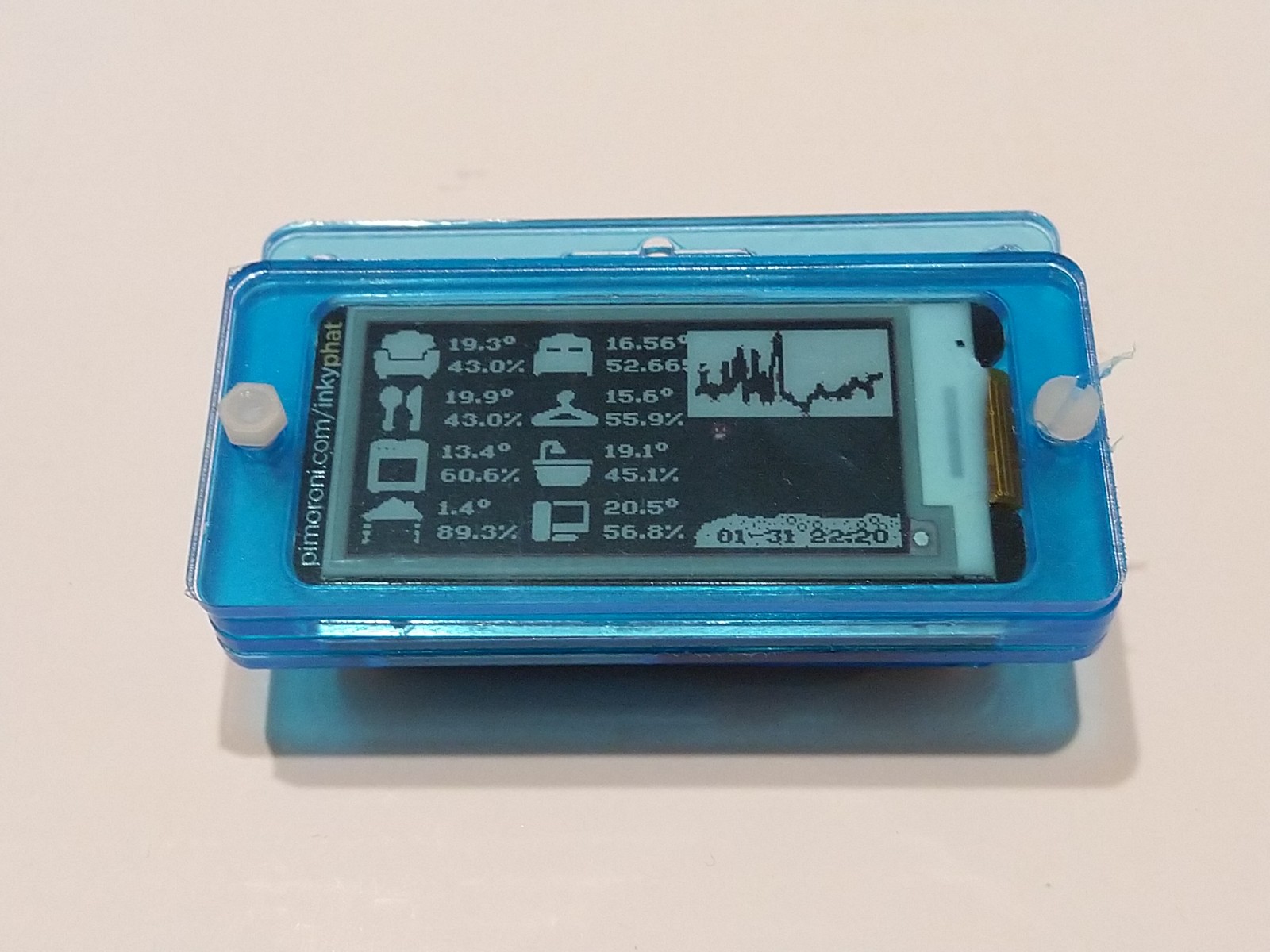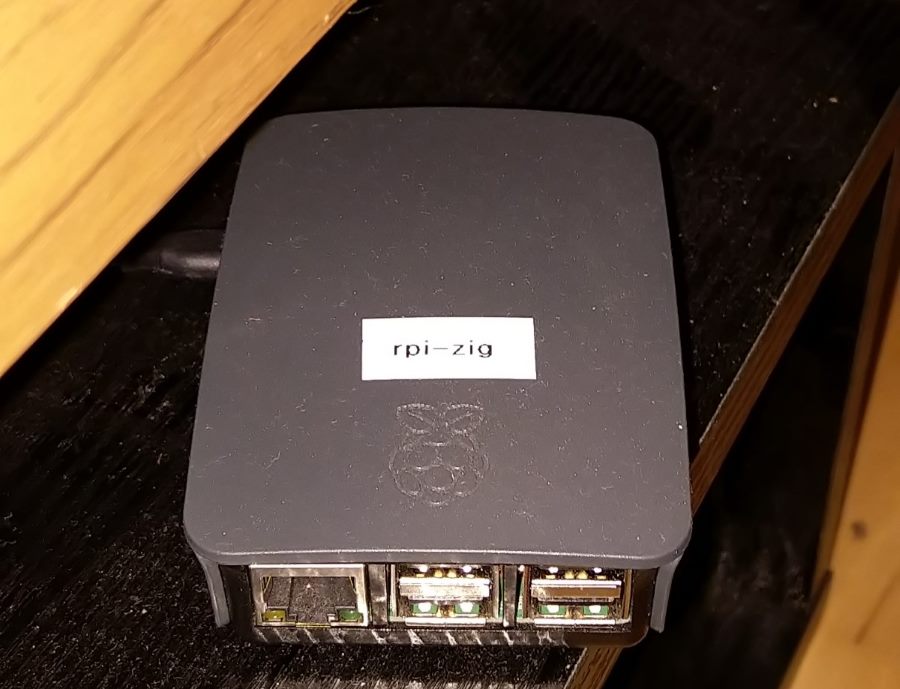Raspberry Pis are for everything
We use quite a few Raspberry Pi based components in the house. It’s easy to program them and easy to expand them with USB or GPIO electronics.
E-Paper Status Display
The quick status display is based on a Raspberry Pi W and the Inky pHat component from Pimoroni. This display fits nicely on the Rasperry Pi and is easy to use.
A custom service on the Pi uses the Home Assistant API to get information and updates the e-ink display screen and then shuts the raspberry pi down. After the specified interval a script on the home server restarts the port on the switch that powers the raspberry Pi over POE and turns the raspberry pi back on. Immediately after booting it does the update and shuts down.
The script that cycles the raspberry pi changes the interval depending on the time of day and if the information has changed significantly.
The display gives quick snapshot all all the rooms and power usage in the house.
High Precision Temperature Sensor
While most of the temperature sensors in the house are the Xiaomi Aqara wireless temperature sensor, there is one high precision one in our bedroom. This is based on the BME680
This sensor is used as it provides good precision on temperature, humidity and certain particulates in the house. As we’ve got a slightly damp bedroom and closet the device is used to regulate a dehumidifier more accurately than the dehumidifier’s built in sensor.
Energenie Power Monitor and Zigbee Hub
Our main sensor networks are built with Raspberry Pis.
The whole house power monitor is based on the wireless Energenie raspberry pi module. The energenie wireless protocol isn’t especially secure, so I don’t use it for two-way control devices. But as a monitoring device it’s fine. The raspberry pi receives data and then broadcasts it to Home Assistant via a custom python MQTT bridge. This is based on pyenergenie.
The Zigbee hub is on the same raspberry pi. This is based on Deconz.




